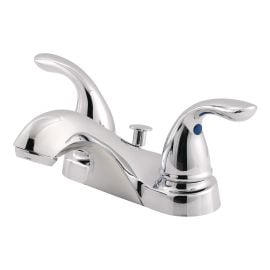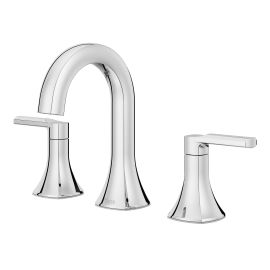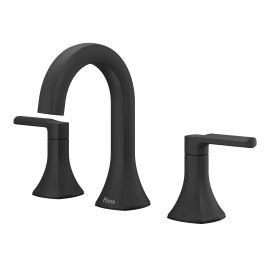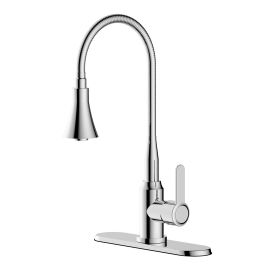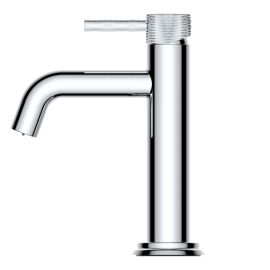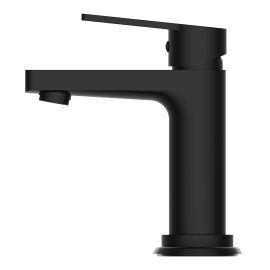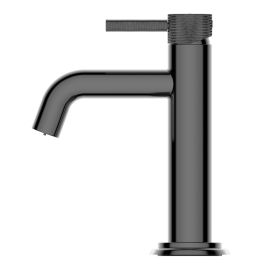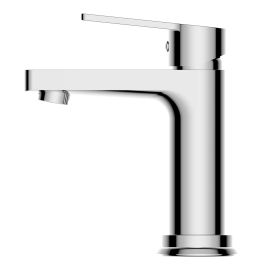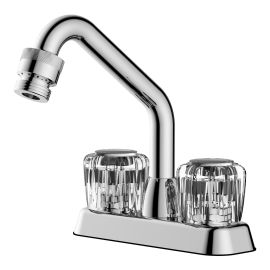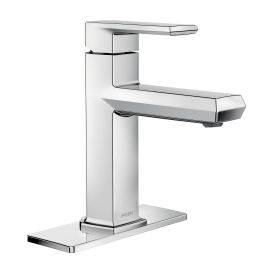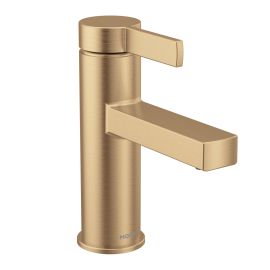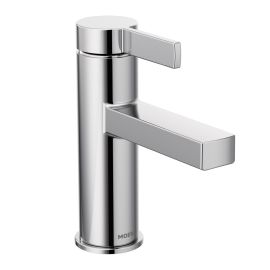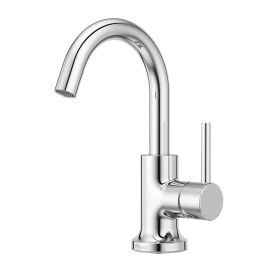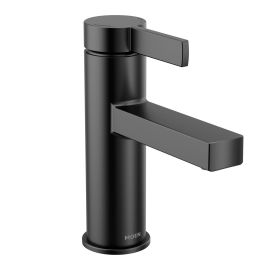When it comes to renovating a bathroom, every detail counts. Homeowners often underestimate the importance of bathroom faucets in setting the overall tone of the room. From design to performance, materials to functionality, there is a lot to consider when choosing bathroom faucets. Here are the factors to keep in mind when looking for a bathroom sink faucet that meets your needs.
Types of bathroom sink faucets
Single-hole faucets can be installed on sinks with one mounting hole. They generally have only one handle, which controls both the flow and temperature of the water.
Centerset faucets must be installed on sinks with three holes. They can have one or two handles to control water temperature and flow. On a centerset faucet, the entire mechanism rests on a single base.
Widespread faucets have a spout and handle that are installed directly on the vanity, without a base.
Finally, for vessel sinks, it’s crucial to choose a faucet with a high arc designed specifically for this type of sink.
Determining the faucet’s centre
To figure out whether your desired faucet will fit the spacing of the mounting holes on your sink, it’s important to calculate the centre.
To do so, measure the distance between the cold and hot water holes, starting from and ending at the middle of each hole. Then, check the manufacturer’s specifications to make sure that the faucet’s centre measurement is the same as that of the sink holes.
Generally, the centre measurement on three-hole faucets (or single-hole faucets with a deck plate) is 4 inches. The measurement on widespread faucets can vary, from 8 to 16 inches.
Tip : It is possible to install a single-hole faucet on a three-hole sink. Simply purchase a deck plate to cover up the unused holes. Many single-hole faucets are sold with a deck plate.
Faucet mechanism
Water temperature and flow control
Two-handled units (1) control hot and cold water separately. Single-handled units (2) have a lever that is pushed from left to right to control temperature and up or down to control flow. Single-handled faucets are useful for people with physical limitations, as they are easier to use. There are also thermostatic faucets (3), most commonly seen in showers, which have two handles: one for water temperature and another for flow. These models provide the ultimate in comfort, as they allow the user to precisely adjust the water temperature. Once the right temperature has been set, it doesn’t need to be changed. No more scalding or freezing when you take a shower!
Faucet cartridge
A faucet cartridge regulates the temperature and flow of water that passes through the faucet. It contains ceramic discs or rubber washers that move inside the faucet to adjust the amount of hot and cold water and control flow. Cartridges with ceramic discs are known to be more reliable (less leaky) than older-style models with rubber washers.
Finally, aerators add air to the water to reduce flow and increase water pressure. They are great at saving water.
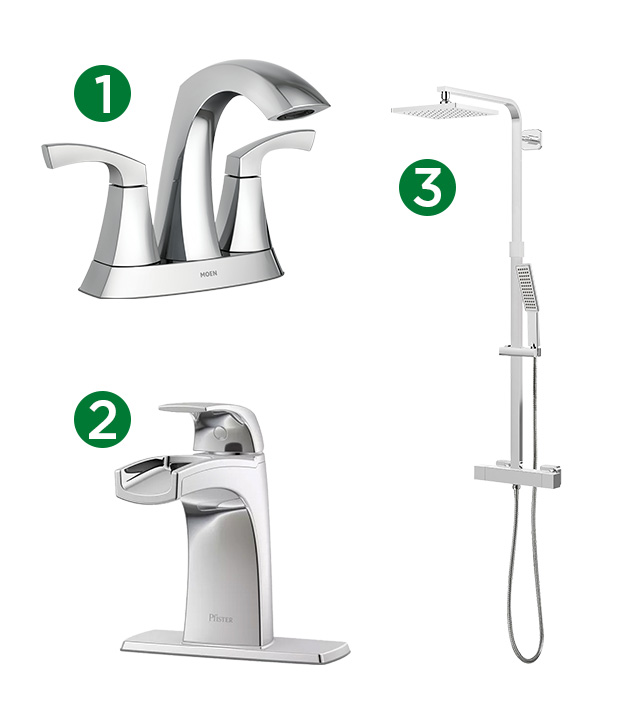
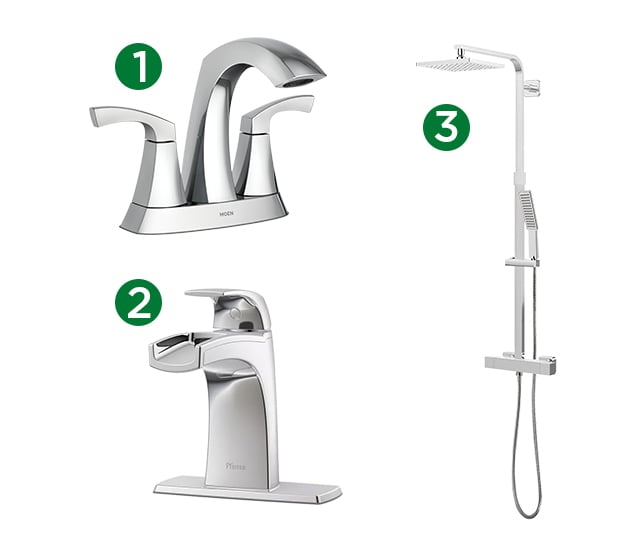
Calculating the reach of a sink faucet
For optimal installation, it’s important to calculate a faucet’s reach. Reach refers to the part of the faucet that overhangs the washbasin. The spout of your faucet needs to extend far enough over the basin so that no one bumps their hands against the back of the sink. Sufficient reach also prevents water from constantly splashing onto the counter.
To calculate a faucet’s precise reach:
- First, calculate the distance from the centre of the faucet’s base to the centre of its spout or aerator (1).
- Take this measurement and subtract the distance between the back of the washbasin and the faucet’s mounting hole (2), as well as the diameter of the mounting hole divided by two (3).
This calculation will give you the ideal reach that your new faucet should have. You can then compare this number with the technical specifications of faucets to make the right choice.
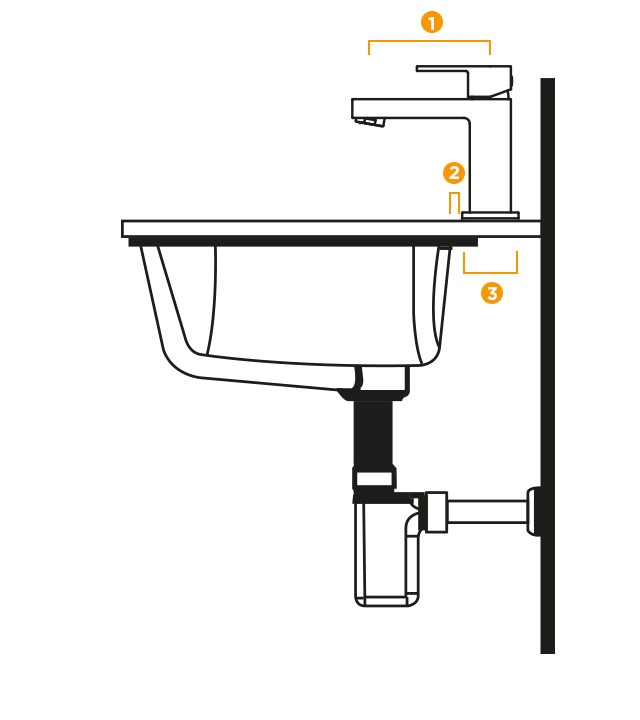

Tip : On certain faucet models, there is a lift rod that controls the sink’s stopper (the plug that seals the drain). If this lift rod is behind the faucet, make sure there is enough space between the faucet and the wall for you to pull the rod out to its fully extended position.
The fun part: Choosing a faucet’s colour and finish
Faucets come in all styles and finishes (polished chrome, brushed nickel, oil-rubbed bronze, stainless steel, black, etc.). Find the one that best matches your decor. Your bathroom will look more aesthetically pleasing if you match your sink faucet to your shower faucet. You’ll also want to match the finish to your other bathroom hardware.
Chrome is a classic finish that makes faucets stand out, but it shows stains and fingerprints faster than other options. Brushed nickel is better at camouflaging stains and has a softer colour than chrome. Matte black or gold can be used to add sophistication to your decor.
To cut down on upkeep, opt for a matte finish. It won’t show water spots or fingerprints as readily as polished metal.
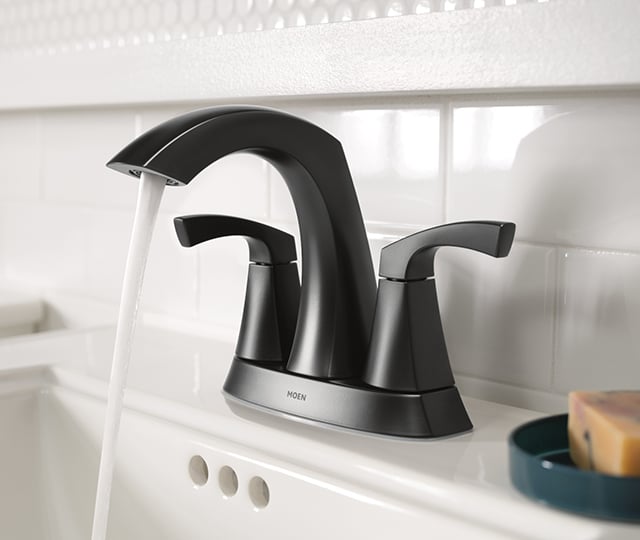

Popular faucet features
WaterSense® labelling: This label is an easy way to identify water-saving products. Look for the logo on other bathroom products, like shower heads and toilets. For more information, consult the Hydro-Québec website.
ADA certification: ADA-certified products are designed to be easier and safer for persons with physical disabilities to use.
Questions? Visit your nearest BMR dealer for all the advice you need to install your new faucet.

